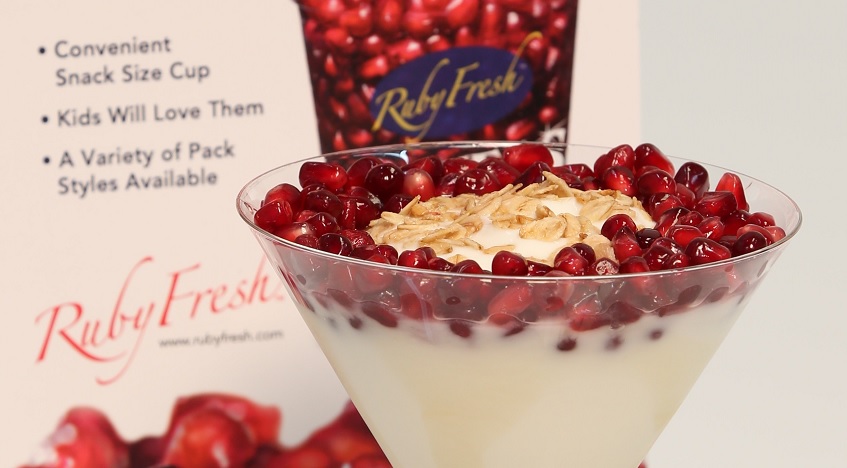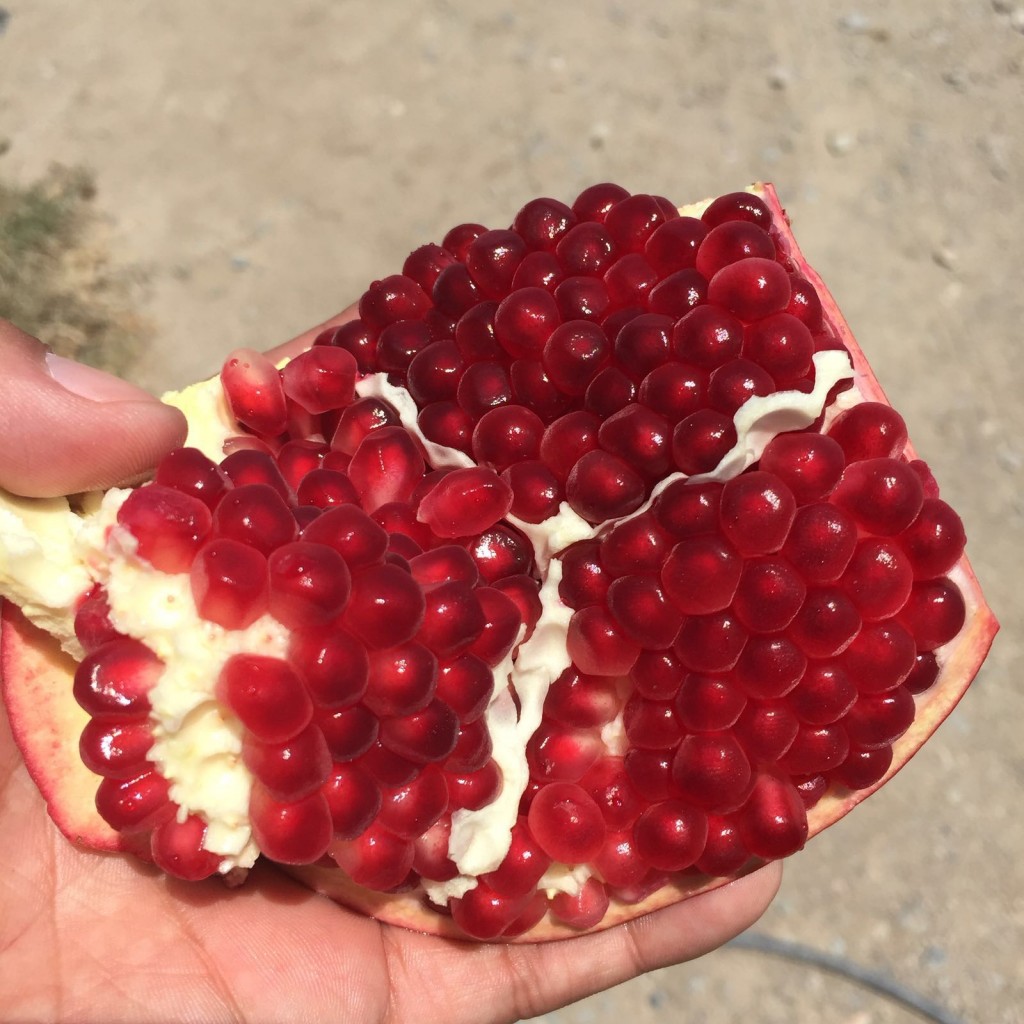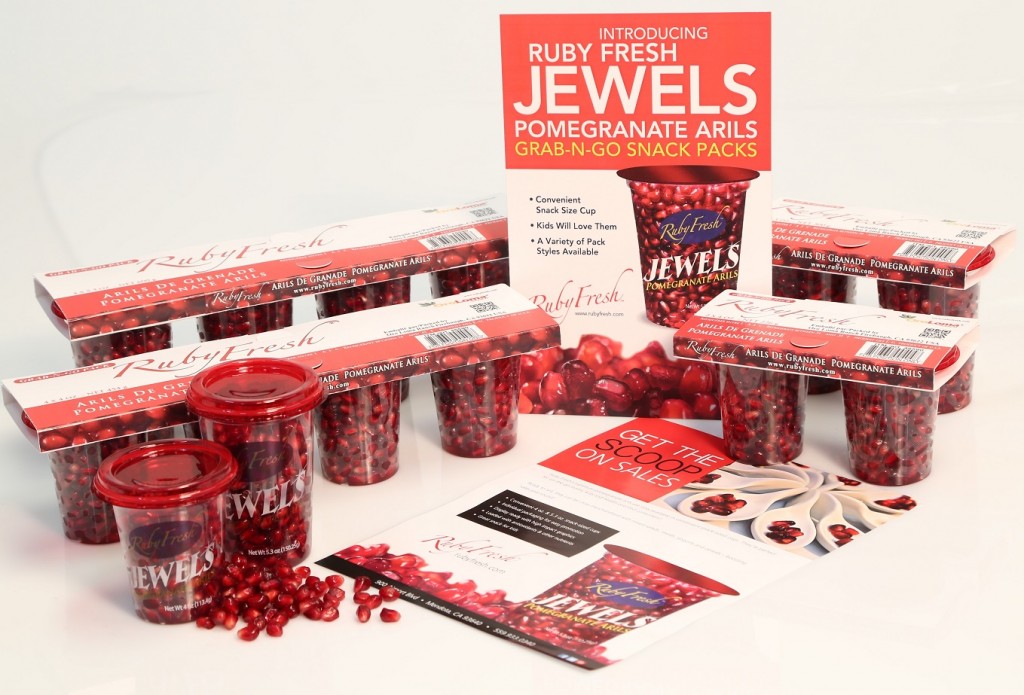U.S.: "Deep end" dive pays off for South American pomegranates at Ruby Fresh

Now with Peru soon to be in the mix, grower Ruby Fresh can almost "close the loop" for a year-round pomegranate program, while weather conditions have meant the local Californian crop is looking up this year too. At www.freshfruitportal.com, we catch up with domestic sales manager David Anthony who talks about the flow-on effects of aril products on the fresh category, and how an inaugural Argentine deal has been a big hit this summer.
Yesterday the United States Department of Agriculture (USDA) announced it had approved the entry of Peruvian pomegranates under an irradiation-based approach, and the timing could not have been better for California-based Ruby Fresh.
The company is in the midst of its first ever Argentine aril import deal, and starting in February 2017 the group plans to start importing the Peruvian fruit as well.
It's a program that has been four years in the making.
"While we've been noticing the change in water conditions here in California, what we did four years ago at Ruby Fresh is we planted some of our trees in Peru - we've had a large operation there with a Peruvian grower," says Anthony.
So far that fruit has been sold in the U.K., continental Europe, Asia and Canada, but now the San Joaquin Valley company's main market the U.S. will be a key destination too.
"We’re really a year-round pomegranate company – there are some companies that are bigger but they come in October and are done by the middle of January.
"The partner is Agro Victoria and they actually took possession of trees from Ruby Fresh – these were Wonderful variety trees from our nursery. We sent them down four seasons ago and they planted them near Ica.
"It’s a beautiful ranch, almost 1200 acres all on drip irrigation, all trellised, probably one of the finest pomegranate plantings I’ve seen and I’ve seen a lot of them."
He emphasizes the irradiation process is with a very low dosage and the fruit safe for human consumption, while sterilizing any pest threats.
"Part of business is taking a chance. We took a chance that [the regulation] would change in the future, and it actually has changed," he says.
"As for Argentina, to bring their whole pomegranates in it's cold treatment so that would be 17 days at 33-34°F, and that once again would kill or sterilize any pests that might be in the shipment.
"We at Ruby Fresh brought in close to 10 container loads of Argentina pomegranates over the summer of 2016 on a trial and it went very well, and we were able to process the fruit and make arils out of it for our retail customers."
He says the Argentine pomegranates are harvested a little later than the Peruvian crop around the end of April.
"We had most of our containers on the water in the first two weeks of May, so that allowed us to have arils from June through September.
 "That's what we’re shipping now at Ruby Fresh - the Argentine pomegranate arils, and when the Peruvian arils start that will allow us to come in a month earlier.
"That's what we’re shipping now at Ruby Fresh - the Argentine pomegranate arils, and when the Peruvian arils start that will allow us to come in a month earlier.
"So it could close the loop – we’re pretty much done with our California arils in about the end of March, and then we should see the Peruvian fruit come in."
He adds there have been no arrival issues with the Argentine fruit, and the program is likely to grow in 2017.
"This was the first year for Ruby Fresh – it was a trial and a commercial volume. We figured we’d just jump right into the deep end.
"We only brought in aril grade, but the result of that trial was so good that we’re now looking at seriously bringing in commercial retail-grade fruit to offer out next year as well."
California: Drought hasn't broken, but certainly eased
Anthony says this domestic growing season has been much better than in 2015, thanks to rain in the fall and the winter months.
"We still are technically in a drought situation in California but we did get to replenish some water tables - there was snow for the runoff, and most of our farms and growers had water allotments," he says.
"For the last few seasons that wasn’t the case – in fact some of our trees didn’t even have water a year ago. It was only whatever fell through rain or what they got through the ground; in other words, through the water table.
"What we’re expecting this season is a more ‘normal’ harvest, so we’re expecting sizing to be a little bit on the larger side, because the trees have had water and it’s allowed the fruit to sit and grow."
He says growers have also had more of an opportunity to prune and attend to trees with applications, mostly due to an improved cost-benefit scenario.
"When there's no water and a farmer doesn’t really know what type of crop he’s going to get, if he sends the people out to the trees to do the pruning and the thinning, there’s a labor cost applied to that and also a cost for any pre-emergents we might apply to stop pests," he says.
"So because of the uncertainty of the drought, many of the growers have allowed the fruit to grow quite frankly in an organic state – they haven’t pruned them, they haven’t applied anything, so there’s a smaller fruit.
"Once they were able to put water on the trees, then they were more comfortable investing in the labor and in the other farming practices that would produce a more normal crop."
He says with the cost per acre foot of water has risen from US$100 to US$1,000 in recent years, a lot of farming organizations have opted to remove their pomegranates trees and replace them with more high-value crops like pistachios and almonds.
But Ruby Fresh has taken a different approach, focusing on further plantations of its mainstay Wonderful variety two seasons ago.
"I can tell you that at Ruby Fresh, we’re one of the few pomegranate growers in California that’s actually planting new varieties of Wonderful variety pomegranates," he says.
"While many of our competitors have been pulling out trees and shrinking the size of their programs, we’re actually planting new trees.
"That means I’m about four seasons away from that fruit being mature where I can get full harvest, but within two years we’ll begin to get a small crop out of those trees."
Pomegranate arils and cross-pollination
This header is not meant in the sense of bees and flowers, but marketing. Anthony says when Ruby Fresh introduced its aril program, some retailers questioned whether they would cannibalize sales of whole pomegranates.
"And I can tell you that 100% every one of our retailers who brought in pomegranate seeds and arils, their whole pomegranate sales have increased," he says.
"We've been very surprised. A few seasons ago it was 25% of our business and we thought ‘wow, I wonder what it’ll be next season’, and I think it’s grown because more and more people as far as consumers are learning about pomegranates."
The aril category is now close to 50% of Ruby Fresh's pomegranate business.
"It’s an exotic fruit. A lot of people bring it home and are intimidated by it, they don’t know what recipes to use it in.
"But with the cups, that intimidation factor goes away and so people are comfortable popping the top, eating the seeds, sprinkling it on yogurt or granola cereal, or maybe even putting it on a major dish in the evening like salmon, or in a salsa.
"The varieties are really starting to expand in terms of recipes to use them in – we’ve promoted them in social media so we have a very active Facebook page and a Pinterest site, so a lot of people share recipes and even holiday decorating ideas."
And it was actual social media interaction that helped generate one of the company's more recent introductions.
"Out of that, believe it or not it was one of our customers and end-user that said they were putting the seeds into their kid’s lunchbox for school," he says.
"We at Ruby Fresh thought that was pretty cool, so we put the pomegranate seeds into a two-ounce cup, a small portion, and just in a test market sent it to a few school districts and it was a big hit.
"Last season we shipped about 10,000 cartons of school lunch packs out to different school districts around the USA and that part of the business is growing very strongly as well.
He says the coming California harvest will likely start between Oct. 7-14, running for 30 days with shipping of the whole fruit through at least mid-December while selling the California-grown arils from the harvest through to March.

















































